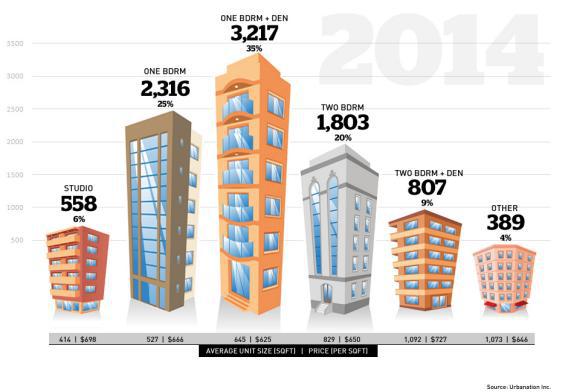There is an increasing demand to live in Toronto, but Toronto is composed of a finite quantity of physical space. Therefore, existing structures built on Toronto land are being redeveloped into taller structures that allow more people to fit on a given parcel. It all seems sensible to me, but the CBC has managed to make it sound weird and problematic:
The pressure is already mounting with single-family homes being snatched up in fierce bidding wars for tens of thousands of dollars — and in a few cases for $200,000 or more — over asking, often with no conditions attached to the offers to purchase. Along with a shrinking stock, prices for single detached homes and townhomes are projected to go up 30 to 50 per cent in the next decade, while condo prices are expected to rise only moderately or stay flat as the oversupply in that market continues to grow.
That scenario effectively eclipses ordinary families out of the market, making condo living the default housing option for those who want to remain in the core. It’s a phenomenon real estate mogul Brad Lamb refers to as the “Manhattanization” of Toronto.
“In New York City, even if you’re an investment banker making $1 million a year, you still can’t afford to buy a house in Manhattan, so you’re buying a condo,” says Lamb.
The problem here is that you have to consider the alternatives. One strategy would be for Toronto officials to deliberately set about making the city a worse place to live. They could make the buses and trains run less frequently and pick up the garbage less frequently, and they could use the savings to set giant piles of money aflame on Sunday mornings. That would reduce demand for Toronto living and thus keep single-family homes affordable. Alternatively, Toronto could adopt strict rules against redeveloping single-family homes into multifamily structures. That would create a situation in which even fewer people are able to “remain in the core” since the core would contain fewer housing units.
Obviously in life many of us would like to have a nice big house with a lawn. But many of us would also like to live in a vibrant urban neighborhood. There is simply a trade-off to be made. Vibrant urban neighborhoods feature expensive land, so single-family homes in them are very expensive, and there’s no real way around that.
